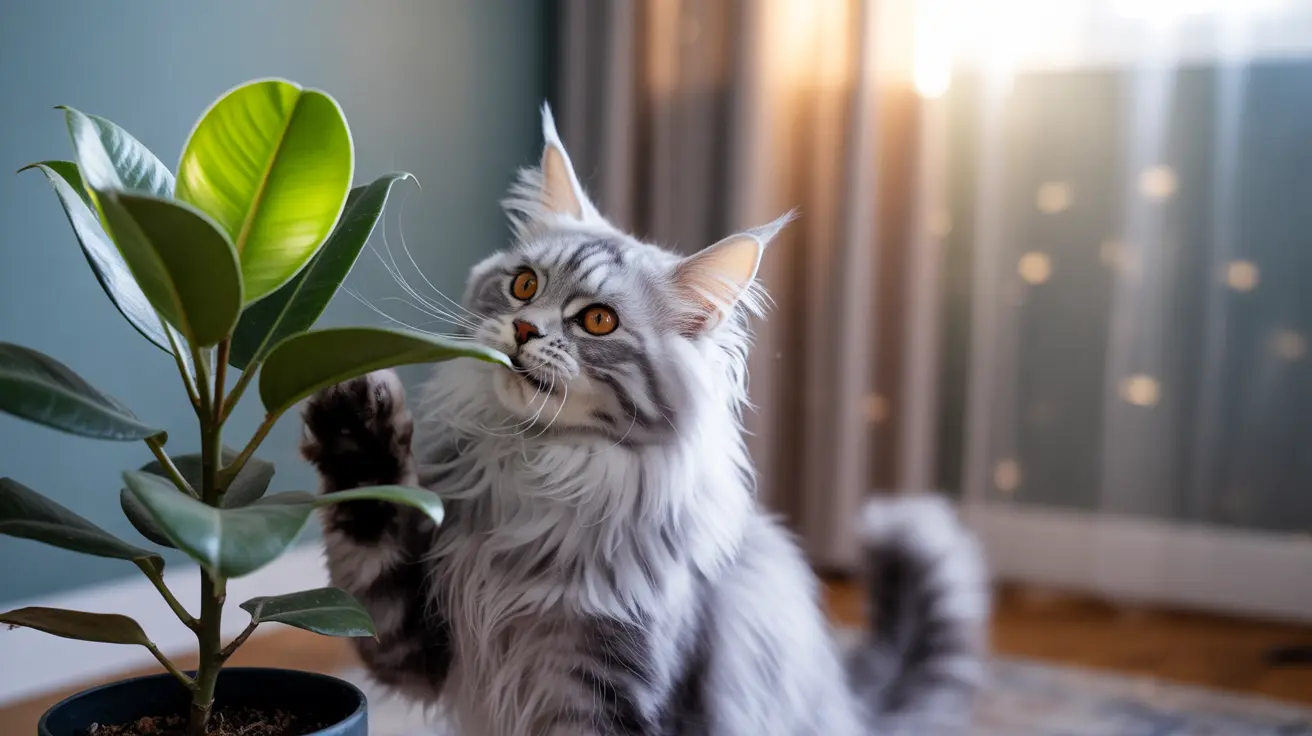For cat owners who love to bring greenery into their homes, understanding which plants are safe for their feline friends is crucial. Rubber plants, in particular, often raise concerns due to their popularity as houseplants. However, not all rubber plants are created equal when it comes to cat safety – some varieties are perfectly safe, while others can pose serious health risks to your curious kitty.
This comprehensive guide will help you understand the different types of rubber plants, their potential effects on cats, and how to keep your pets safe while maintaining your indoor garden.
Understanding Different Types of Rubber Plants
There are two main types of plants commonly called "rubber plants," and their effects on cats differ significantly:
American Rubber Plant (Peperomia obtusifolia)
Also known as the baby rubber plant or pepper face, this variety is officially recognized as non-toxic to cats by the ASPCA. While consuming large amounts might cause mild stomach upset, it generally poses no serious threat to your feline companion.
Indian Rubber Plant (Ficus elastica)
This variety, including its relative Ficus benjamina, contains toxic compounds that can harm cats. All parts of the plant contain irritants that can cause various uncomfortable and potentially serious symptoms.
Signs of Rubber Plant Toxicity in Cats
If your cat has consumed parts of a toxic rubber plant (Ficus species), watch for these symptoms:
- Excessive drooling
- Vomiting
- Diarrhea
- Oral irritation
- Loss of appetite
- Lethargy or depression
- Lack of coordination
- Tremors (in severe cases)
Immediate Steps After Plant Ingestion
If you suspect your cat has eaten any part of a rubber plant:
- Remove any plant material from your cat's mouth if possible
- Document which type of rubber plant was involved
- Monitor your cat closely for symptoms
- Contact your veterinarian immediately if symptoms appear
- Keep the plant or a photo handy for identification
Prevention and Safe Alternatives
To create a cat-safe environment while still enjoying houseplants:
- Choose the non-toxic American rubber plant (Peperomia) over Ficus varieties
- Keep all plants out of easy reach
- Provide cat-safe alternatives like cat grass or catnip
- Consider hanging planters or enclosed terrariums
- Create dedicated "cat gardens" with pet-safe plants
Frequently Asked Questions
Are all types of rubber plants toxic to cats, or only specific species?
No, not all rubber plants are toxic to cats. The American rubber plant (Peperomia obtusifolia) is non-toxic, while the Indian rubber plant (Ficus elastica) is toxic to cats.
What symptoms should I watch for if my cat ingests an Indian rubber plant (Ficus elastica)?
Watch for drooling, vomiting, diarrhea, oral irritation, lethargy, depression, and lack of coordination. In severe cases, tremors may occur.
Is the American rubber plant (Peperomia obtusifolia) safe to keep around cats?
Yes, the American rubber plant is considered safe for cats. While eating large amounts might cause mild stomach upset, it's not toxic.
What immediate steps should I take if my cat eats a rubber tree plant?
Remove any remaining plant material from your cat's mouth, identify the plant species, and contact your veterinarian immediately if it's a Ficus variety or if your cat shows concerning symptoms.
Why do cats tend to chew on rubber plants, and how can I prevent it?
Cats may chew plants out of curiosity, boredom, or attraction to movement and texture. Prevent access by placing plants out of reach, using deterrent sprays, or providing cat-safe alternatives like cat grass.
Conclusion
While not all rubber plants pose a threat to cats, it's essential to know exactly which variety you have in your home. If you're unsure about your plant's identity, err on the side of caution and keep it out of your cat's reach. Consider opting for the non-toxic American rubber plant (Peperomia obtusifolia) to maintain both a green home and a safe environment for your feline friend.






